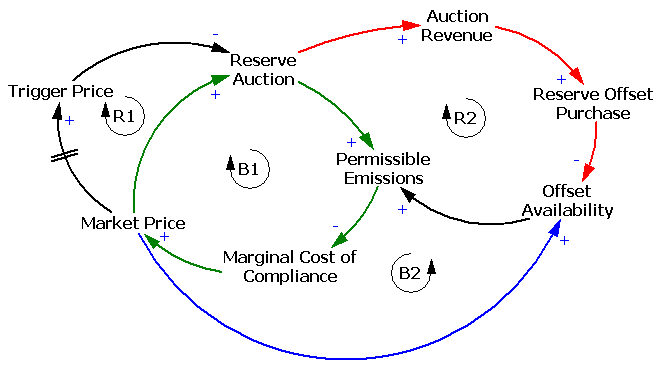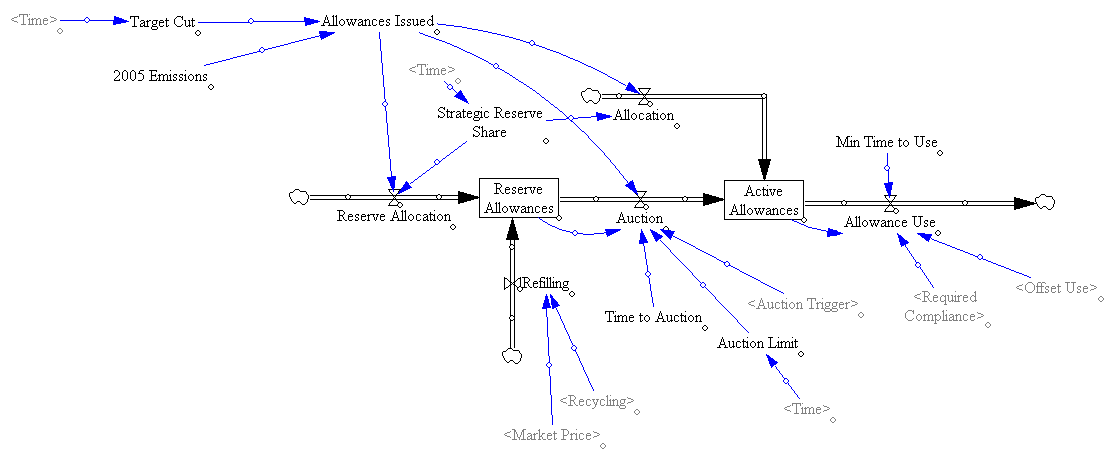I’m not a cap & trade fan, but I find it rather bizarre that the most successful opposition to California’s AB32 legislation comes from the environmental justice (EJ) movement, on the grounds that cap & trade might make emissions go up in areas that are already disadvantaged, and that Air Resources failed to adequately consider alternatives like a carbon tax.
I think carbon taxes did get short shrift in the AB32 design. Taxes were a second-place favorite among economists in the early days, but ultimately the MAC analysis focused on cap & trade, because it provided environmental certainty needed to meet legal targets (oops), but also because it was political suicide to say “tax” out loud at the time.
While cap & trade has issues with dynamic stability, allocation wrangling and complexity, it’s hard to imagine any way that those drawbacks would change the fundamental relationship between the price signal’s effect on GHGs vs. criteria air pollutants. In fact, GHGs and other pollutant emissions are highly correlated, so it’s quite likely that cap & trade will have ancillary benefits from other pollutant reductions.
To get specific, think of large point sources like refineries and power plants. For the EJ argument to make sense, you’d have to think that emitters would somehow meet their greenhouse compliance obligations by increasing their emissions of nastier things, or at least concentrating them all at a few facilities in disadvantaged areas. (An analogy might be removing catalytic converters from cars to increase efficiency.) But this can’t really happen, because the air quality permitting process is not superseded by the cap & trade system. In the long run, it’s also inconceivable that it could occur, because there’s no way you could meet compliance obligations for deep cuts by increasing emissions. A California with 80% cuts by 2050 isn’t going to have 18 refineries, and therefore it’s not going to emit as much.
The ARB concludes as much in a supplement to the AB32 scoping plan, released yesterday. It considers alternatives to cap & trade. There’s some nifty stuff in the analysis, including a table of existing emissions taxes (page 89).
It seems that to some extent ARB has tilted the playing field a bit by evaluating a dumb tax, i.e. one that doesn’t adapt its price level to meet environmental objectives without legislative intervention, and heightening leakage concerns that strike me as equally applicable to cap & trade. But they do raise legitimate legal concerns – a tax is not a legal option for ARB without a vote of the legislature, which would likely fail because it requires a supermajority, and tax-equivalent fees are a dubious proposition.
If there’s no Plan B alternative to cap and trade, I wonder what the EJ opposition was after? Surely failure to address emissions is not compatible with a broad notion of justice.


















